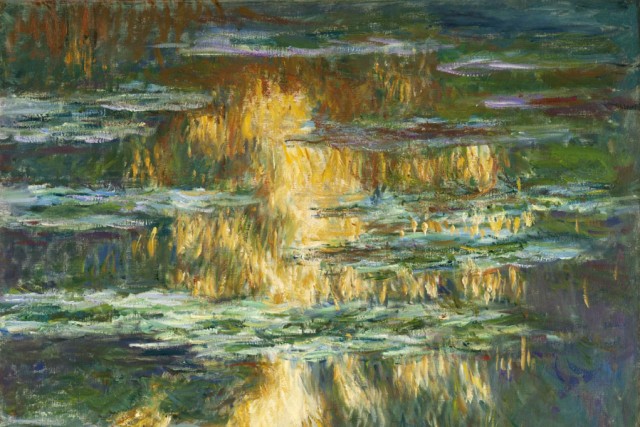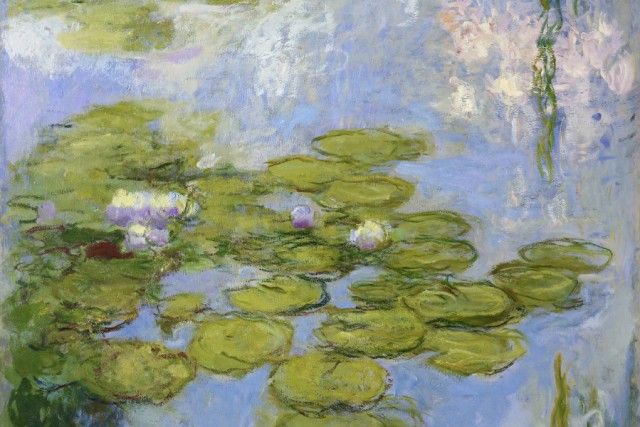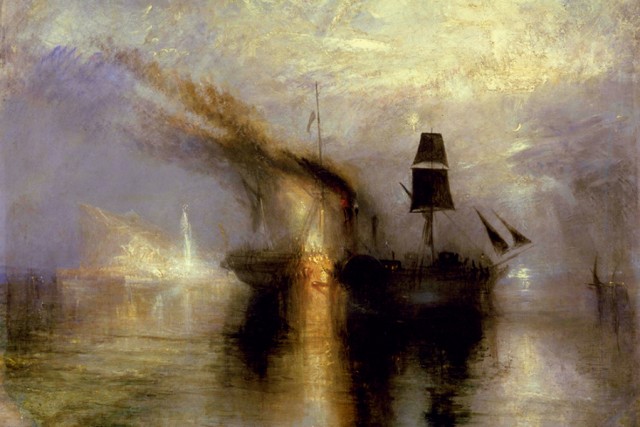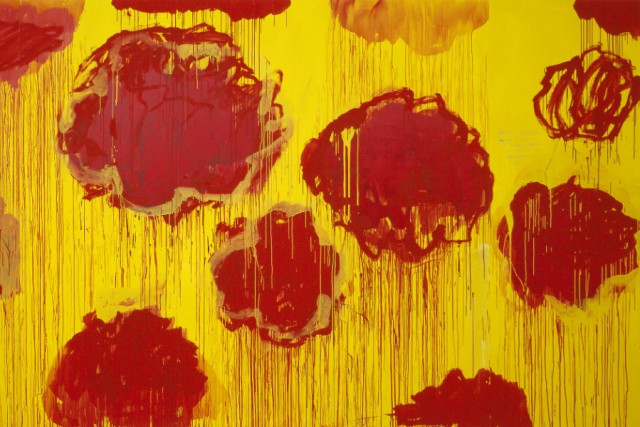Turner Monet Twombly – In Conversation
Tate’s latest exhibition brings together three men separated by eras. We spoke to exhibition curator Jeremy Lewison to see what unites them…
It seems year on year, as summer time comes around, it is to the pleasure of art lovers and beyond that we welcome another name from the A-list to the Albert Dock. In the recent past we’ve seen Picasso and Klimt, while this time last year it was the turn of Belgian surrealist Rene Magritte. If Tate Liverpool continues in this vein, they may worry about being taken for granted. This time around, we’re getting triple the bang for our buck, with Turner Monet Twombly: Later Paintings.
Of course, the three men operated in markedly different times: JMW Turner, Claude Monet and Cy Twombly couldn’t possibly have anything in common, not enough to base an exhibition featuring more than 60 works around, surely? If not exactly ‘emperors new clothes’, we did wonder why, other than guaranteeing visitors, would Tate plump specifically for these three.
Jeremy Lewison wasted no time at all in exploding whatever assumptions we’d brought to the table. Previously Director of Collections at Tate in London (a position he held for 18 years), Lewison began by explaining that “the exhibition was commissioned by Moderna Museet [in Stockholm], who initially wanted the show to feature Turner, Monet and [Mark] Rothko … the more I thought about it, I thought it wasn’t the right combination. Rothko had already been canonised, and his place was firmly established. Twombly was a bit more edgy, and of course, at that point still alive.”
Early omens were good. When Jeremy visited him shortly before his death last year, Twombly had “found the exhibition really interesting, and had began to think about the show and how it would work.” An avid collector of letters by artists who fascinated him, Twombly explained that in his collection were letters written by both Turner and Monet. It was at this point Lewison must have known his instinct in plumping for Twombly over Rothko had been correct.
Before that wonderful, serendipitous discovery, Lewison explained that he had pondered “a number of different links” between the three, which pointed to how he would tie the show together. “I was interested to look at what happens to Romanticism after Turner. Somehow art moves towards the symbolist and then the modernist. There are strong aspects of Romanticism in Monet’s work that he might not admit himself, [and] Twombly described himself as a romantic symbolist. His works are a palimpsest – layers of different cultures, imbued with a sense of the romantic.”
Another important aspect is that ‘Later Paintings’ element of the exhibition title. We are looking at works by men in later life. “What preoccupies artists in older age?” asks Lewison. He goes on to suggest that it’s “an attitude towards mortality and an attitude to loss – how did the artist deal with, and frame, loss?” These questions had particular relevance in Twombly’s case. Of course, he has only very recently died, but he continued to work after a number of health scares. “It’s quite extraordinary with some of the bigger of Twombly’s paintings. When I saw him, he was transformed in front of the canvas. Camino Real [in The Vital Force section of the exhibition] expresses vitality and exuberance of still being alive.”
If it all still seems a little on the nebulous side, as soon as you walk around the exhibition, such thoughts are instantly banished. Arranged thematically (“I constructed this as a conversation”, says Lewison) the exhibition draws some wonderful parallels between the artists – juxtaposing two, sometimes all three – and one can see the intent and effort that has gone into the exhibition to provide a new context in which to view the already wonderful pieces.
Lewison puts it best, setting a scene. “Twombly and Turner meet downstairs standing in front of their respective versions of Hero and Leander. They could have an exchange and come to an understanding eventually. They might [all three of them] come to blows but they also might have a grudging admiration in the end.” When asked whether in curating the exhibition he felt part of their conversation, he replied: “I felt I was listening in. I wasn’t taking part in the dialogue, simply listening in”.
Of course, the inclination when presented with greats such as these is to compare them, and perhaps pick a particular favourite. We couldn’t leave without asking the question of Jeremy. “I don’t have a favourite artist of the three. Amongst the Twombly, I love Orpheus; it’s such a slow painting. That’s what this exhibition is about; it’s opening itself up to poetry, looking into this conversation that’s taking place. I’m not telling you how to respond to it – I want you to have your own response.”
Turner Monet Twombly: Later Paintings continues at Tate Liverpool until 28th October £12, concessions available
Images courtesy Tate
For more on Turner Monet Twombly, read our review of the exhibition over at Creative Tourist, who we are pleased to announce are our new publishing partners. For more info and regular updates, why not subscribe, for free, to our newsletter?









